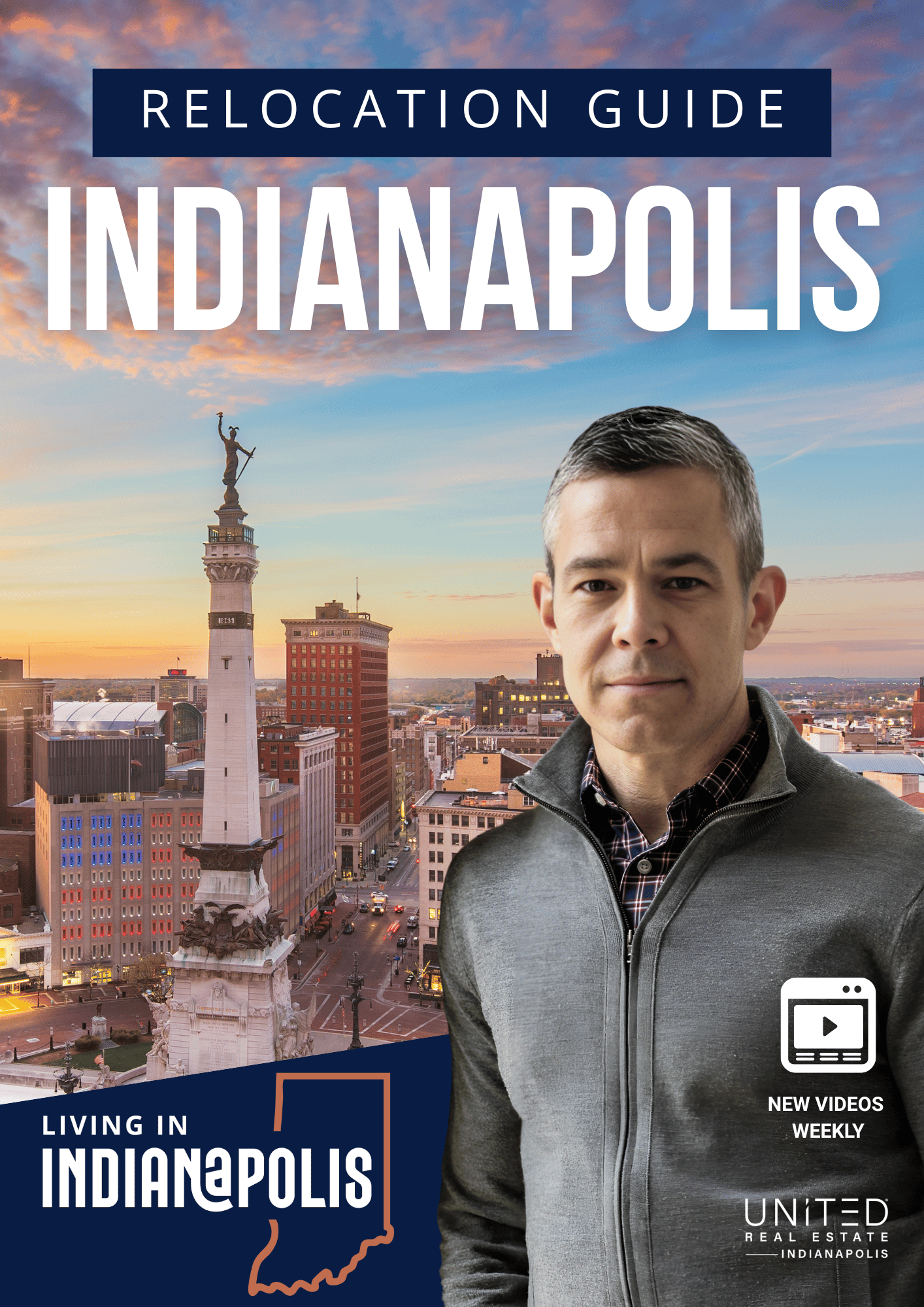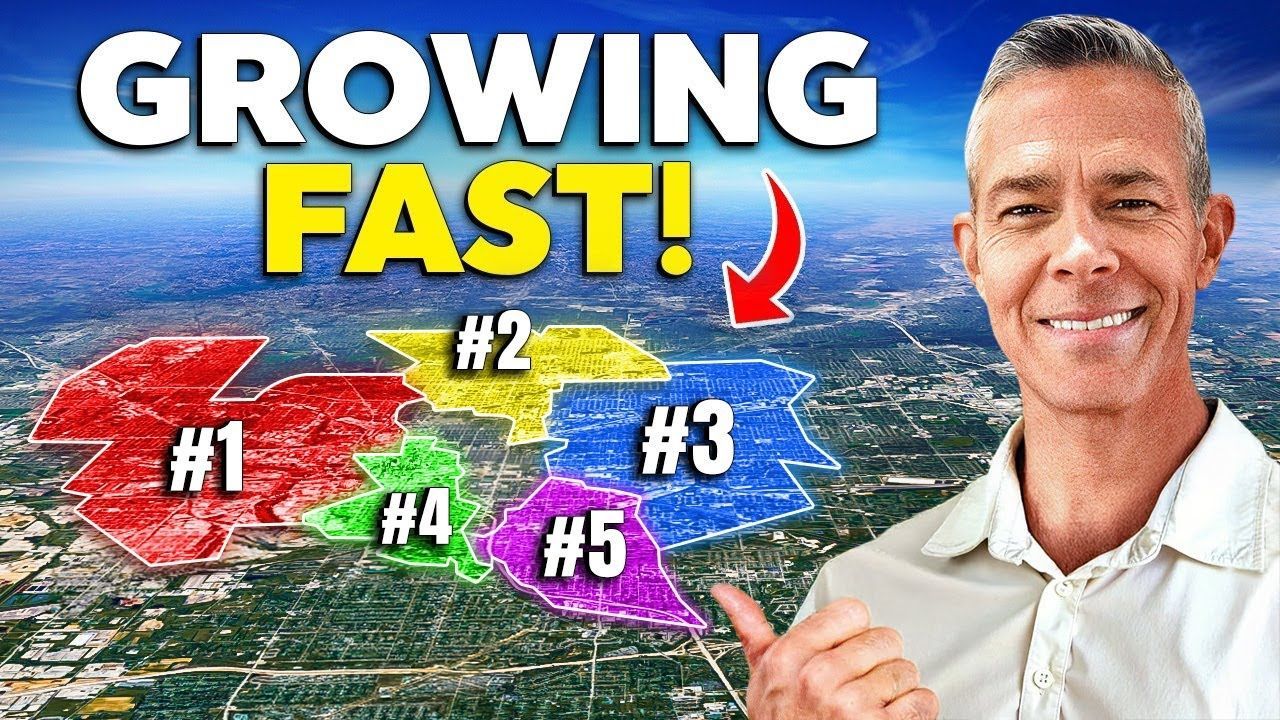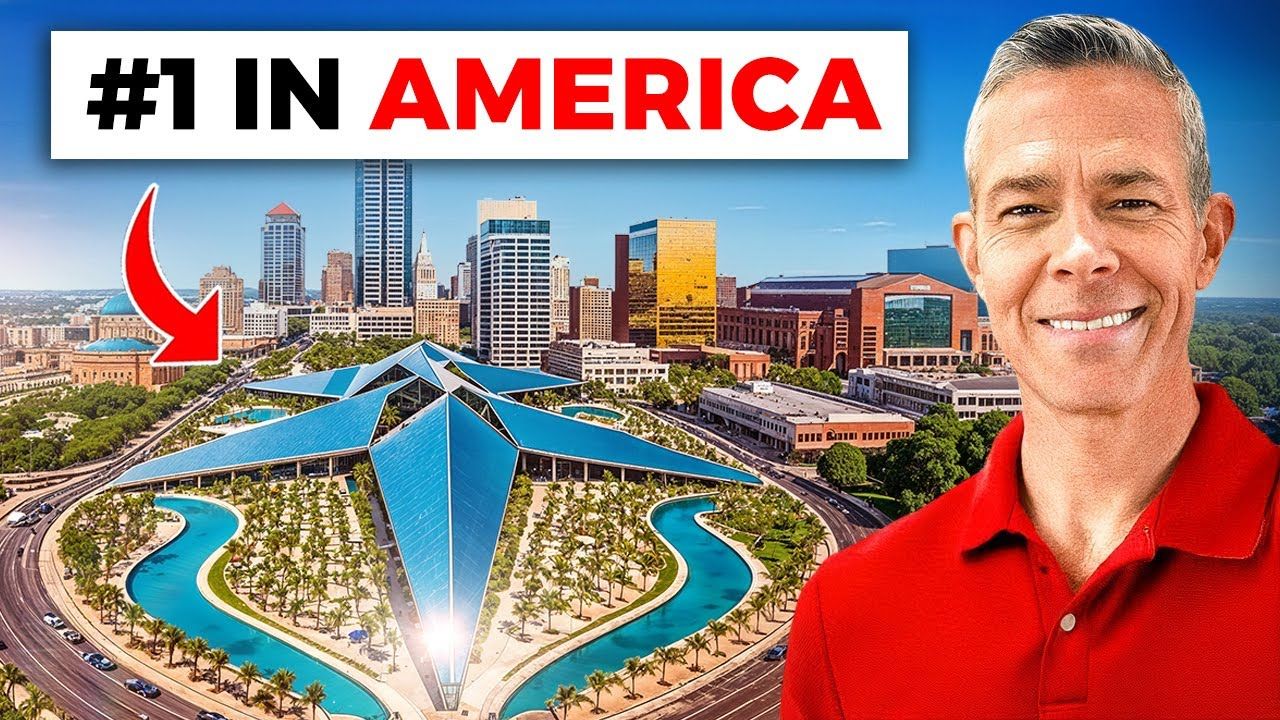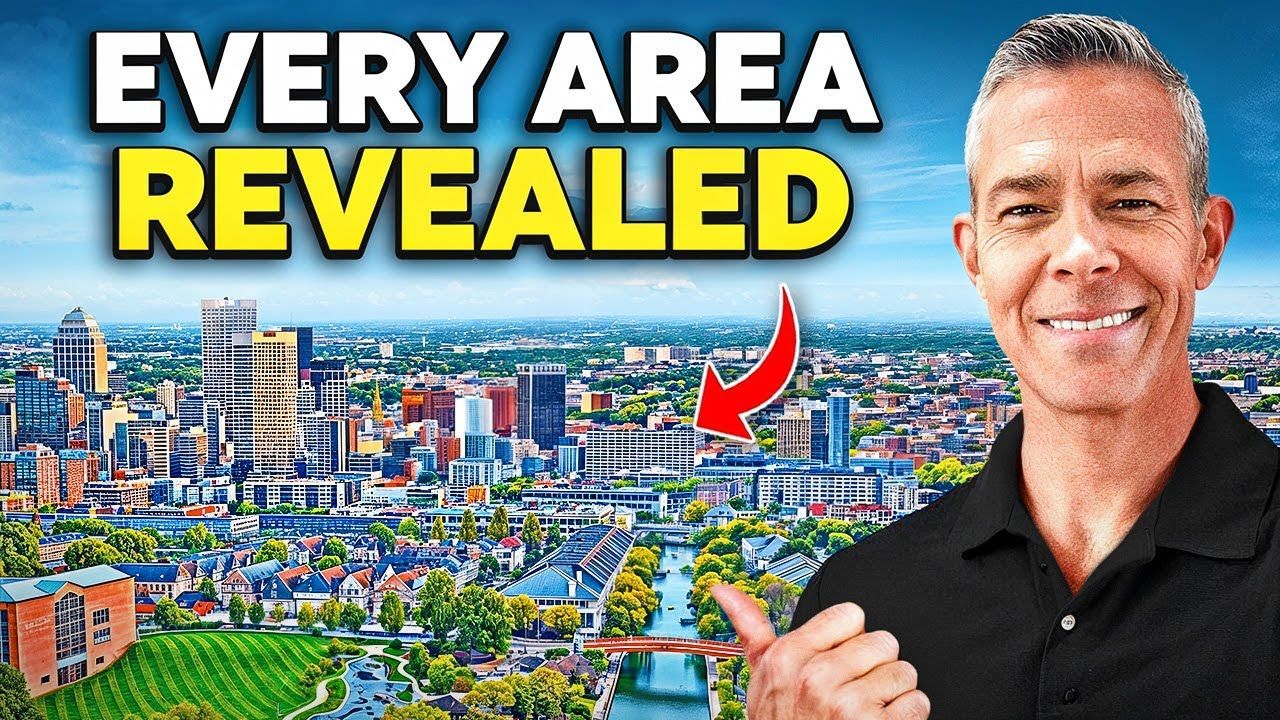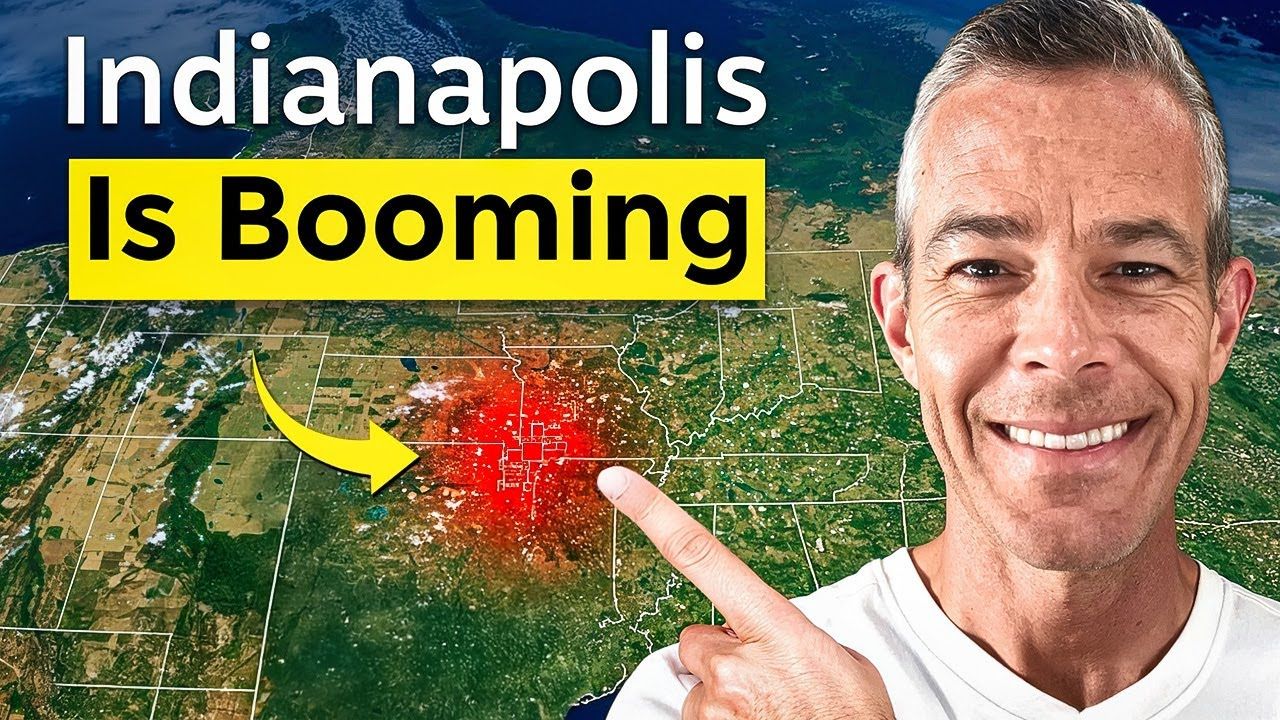Indianapolis’ Biggest Megaprojects (Crazy Changes Coming!)
The phrase Indianapolis development projects captures a wave of change that is already underway across the metro area. Over the next several years, these Indianapolis development projects will reshape where people live, how companies locate, and where investors focus capital. If you want to understand where demand will concentrate, what neighborhoods will appreciate, and which property types offer the best opportunities, this guide breaks down three of the biggest Indianapolis development projects and explains exactly how each one translates into real estate impact.
Table of Contents
- Indianapolis Development Projects: The Megaprojects Transforming the City
- Project #1: 16 Tech Innovation District
- Project #2: Indianapolis Airport Expansion and Aerotropolis Plan
- Project #3: IU Health Academic Health Center
- What Buyers Should Know About Indianapolis Development Projects
- How Sellers Can Benefit from These Indianapolis Development Projects
- Investor Strategies for Indianapolis Development Projects
- Pulling It Together: How Indianapolis Development Projects Will Reshape Neighborhoods
- Actionable Steps for Buyers, Sellers, and Investors
- FAQs About Indianapolis’ Biggest Megaprojects
- Final Thoughts on the Future of Indianapolis Development Projects
Indianapolis Development Projects: The Megaprojects Transforming the City
Indianapolis development projects are not a single initiative; they are a coordinated set of major investments in innovation, logistics, and health care. Together they exceed a billion dollars and will drive demand for housing, commercial real estate, and industrial space for years to come. Below I walk through three of the most consequential projects: 16 Tech, the airport expansion and aerotropolis planning, and the IU Health academic health center. For each project I explain what is being built, timelines to watch, and the specific real estate implications for buyers, sellers, and investors.
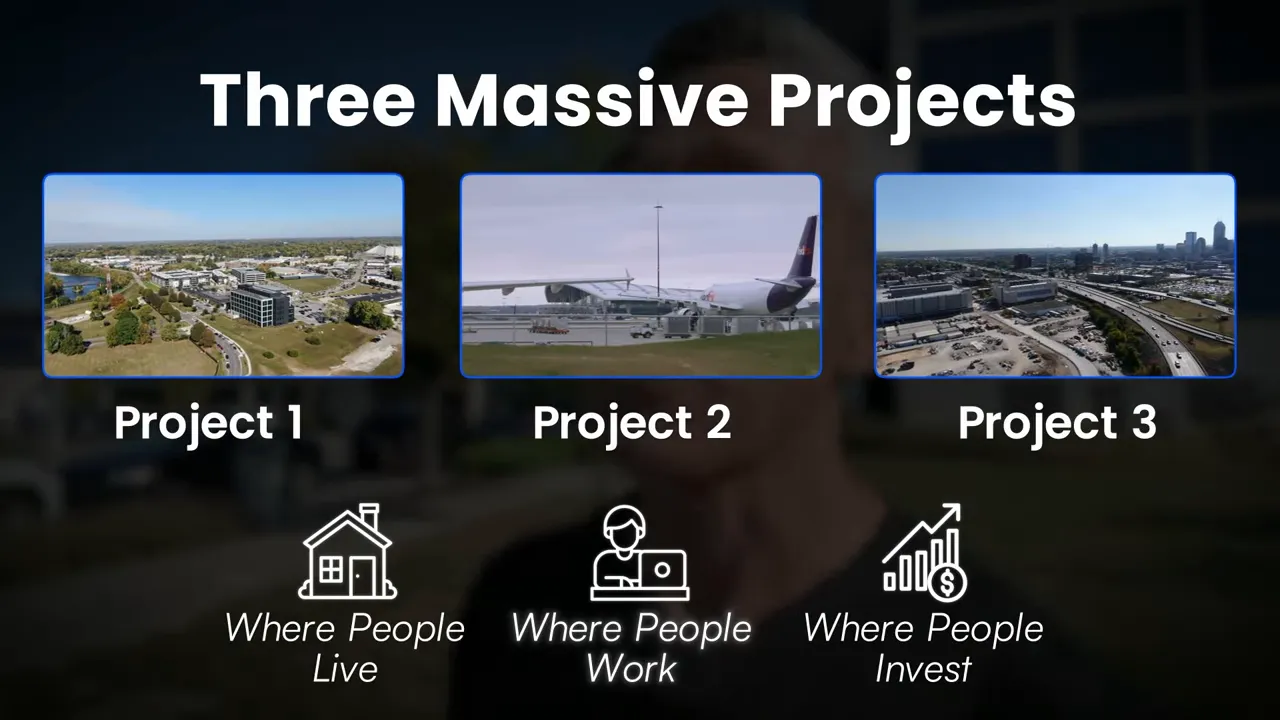
VIEW HOMES FOR SALE IN INDIANAPOLIS, IN
Project #1: 16 Tech Innovation District
What 16 Tech is and where it sits
16 Tech is a 50 acre urban innovation district located just northwest of downtown Indianapolis. This Indianapolis development project is designed to be a hub for life sciences, tech, research, advanced manufacturing, and entrepreneurial startups. The campus blends co-working labs, dedicated lab space, office suites, residential units, and community amenities such as food halls, makerspaces, and public green space.
Why talent clustering matters
When you create a concentrated ecosystem of researchers, startups, and technical talent, you get talent clustering. Talent clustering drives localized housing demand, especially for walkable, bikeable, and transit-friendly neighborhoods inside a two mile radius. Professionals working in labs and tech offices prefer shorter commutes and flexible living arrangements. Visiting researchers, medical residents, entrepreneurs in accelerators, and short-term contract staff create heightened demand for short-term rentals and corporate housing.
That means neighborhoods adjacent to 16 Tech will see increased interest from long-term renters, owner occupants looking for proximity, and investors who want dependable rental cash flow from professionals who value convenience. Expect to see more mixed use buildings and multifamily near the district, as well as a rise in restaurants, cafes, and retail that cater to the life sciences community.
What to look for if you want to buy or invest near 16 Tech
- Properties within a two-mile radius of 16 Tech that offer easy bike, scooter, or shuttle access will be in higher demand.
- Multifamily and mixed use buildings that cater to short-term and corporate housing will attract higher yields.
- Conversion opportunities — older commercial properties that can be repurposed into labs, co-working, or retail — will become more valuable.
- Investors should scout transit corridors and arterial streets connecting downtown to 16 Tech for development or redevelopment plays.
Project #2: Indianapolis Airport Expansion and Aerotropolis Plan
The airport and aerotropolis plan
Indianapolis International is already widely recognized for its operational efficiency and customer experience. For more than a decade it has ranked at or near the top of North American airports in customer satisfaction. Now the airport is expanding both passenger and cargo-related capacity, including the addition of a new 1500 space parking garage, electric vehicle chargers, solar installations, and the new Weston Hotel adjacent to the terminal.
Beyond the terminal improvements, Indianapolis is advancing a long term aerotropolis plan that connects the airport to adjacent land uses optimized for logistics, industrial distribution, and commercial activity. FedEx already operates one of the largest hubs here. Planned expansions will increase cargo throughput and make the surrounding counties prime locations for warehouses, distribution centers, and advanced logistics operations.
Real estate impacts of an airport-focused growth strategy
When airports scale cargo and passenger capacity, the ripple effects show up across several real estate sectors simultaneously:
- Industrial: Immediate demand for warehouse, cold-storage, and last-mile distribution facilities increases.
- Commercial: Office parks and corporate locations that value proximity to cargo infrastructure see leasing demand.
- Residential: Workforce housing becomes critical — from entry-level rentals to new single-family neighborhoods for employees and management alike.
- Land values: Vacant land closest to interchanges and airport access points gains premium value for commercial rezoning and development.
Counties like Hendricks and Marion and towns like Plainfield, Avon, and Decatur Township will directly feel this demand. Expect more speculative building, particularly in submarkets with large tracts of developable land close to I-70, I-465, and the airport access roads.
Where investors should focus around the airport
- Industrial land and built warehouses for sale or lease near airport interchanges.
- Purpose-built workforce housing and multifamily aimed at logistics staff.
- Retail and service properties that support industrial workers — quick-service restaurants, convenience retail, and vehicle services.
- Opportunities to buy lots or older buildings near key nodes for repositioning into logistics or commercial uses.
Project #3: IU Health Academic Health Center
The IU Health academic health center
By any measure, the single largest construction project in the Indianapolis metro is IU Health's new academic health center and hospital. This is a roughly $4.3 billion project that consolidates Methodist Hospital and University Hospital into a single, state-of-the-art downtown campus. The build includes 864 patient rooms, 50 operating rooms, integrated research and teaching facilities, and a sprawling 44 acre footprint that connects directly to the medical education ecosystem.
The timeline for the hospital is worth noting. Construction is already significant, and while full completion is scheduled in phases, the target opening is in the latter part of 2027. Even before the hospital opens, supporting construction and ancillary projects will stimulate local demand and attract businesses to the medical corridor.
How a mega health campus changes a downtown
Large medical campuses are among the most reliable long-term economic anchors a city can have. They create high paying jobs for doctors, nurses, researchers, and allied health professionals. They also attract students, visiting clinicians, and contract staff who will need housing, food, and services.
Expect the following changes along the downtown medical corridor:
- Higher rental demand from traveling nurses, medical residents, and students seeking convenient, furnished units.
- Growth in medical office space and ancillary clinics spread throughout nearby neighborhoods.
- Retail and service density — more restaurants, cafes, and day-to-day service businesses catering to hospital staff and patients' families.
- Appreciation in property values, following patterns seen near the Cleveland Clinic and Texas Medical Center, where large hospital campuses triggered neighborhood revitalization and sustained price increases.
What buyers, sellers, and investors need to know about the health campus
Buyers should expect competition and rising prices in neighborhoods that offer short commutes to the new IU Health campus. If you want to be near that employment center, getting in earlier rather than later can produce a better entry price and more options.
Sellers who own property near the health campus may find themselves holding highly desirable assets. The timing of a sale matters. Listing during late-stage construction or just after the campus opens can attract premium offers from buyers who want immediate proximity.
For investors, the playbook is familiar: short-term and mid-term furnished rentals, multifamily properties, and mixed use redevelopment in walkable zones will outperform many other asset types. Medical service providers and support businesses will also create opportunities for commercial leasing and small retail investments.
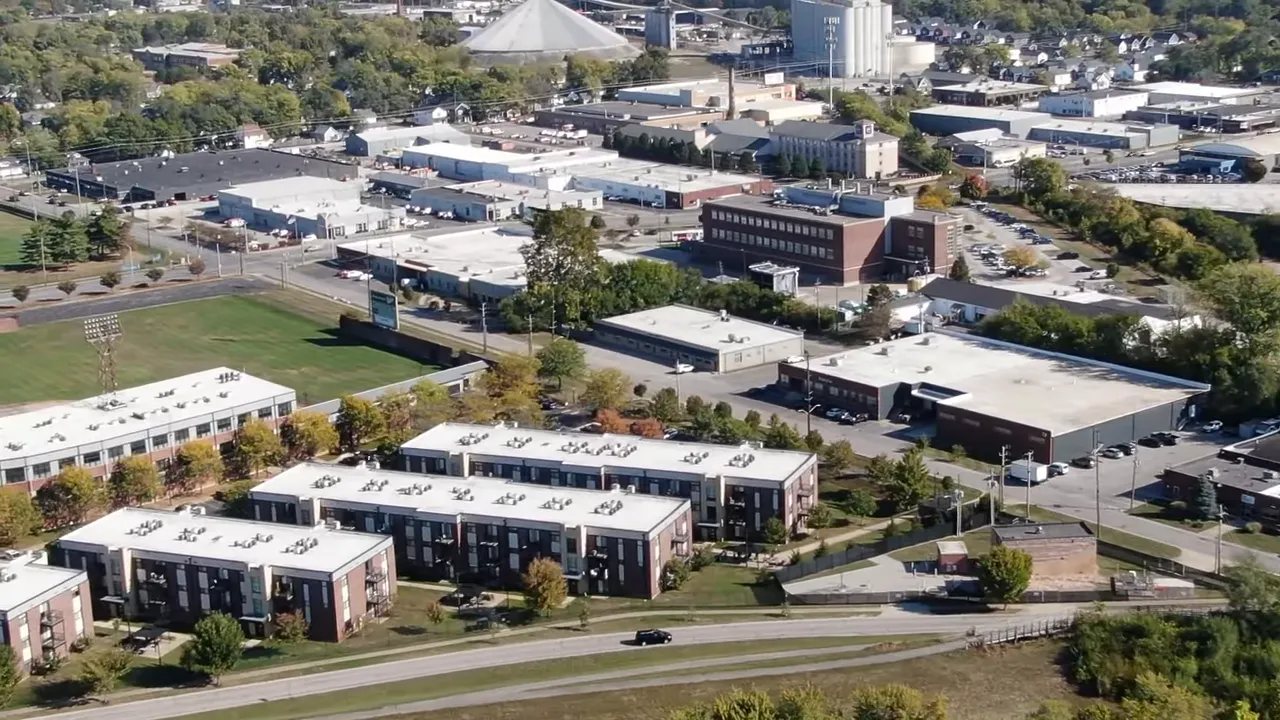
What Buyers Should Know About Indianapolis Development Projects
How should buyers position themselves amid these Indianapolis development projects? First, prioritize location relative to the projects you care about. If you want to work in or benefit from the life sciences scene, look near 16 Tech. If your interest is logistics or industrial employment, focus on neighborhoods and suburbs with quick airport access. If health care is the draw, downtown and the medical corridor should be a priority.
Expect that over the next five to ten years competition and pricing will intensify in all the submarkets connected to the three megaprojects discussed here. Early movers often have better negotiating positions and more inventory to choose from. Remember that ground-floor opportunity is as much about timing as it is about geography.
How Sellers Can Benefit from These Indianapolis Development Projects
If you own property near one of these Indianapolis development projects, you could be holding one of the hottest listings in town. Demand will lift comps, and your equity could accelerate. That said, timing can optimize returns. Listing a property right as a project nears completion or in the months after the grand opening often yields the strongest buyer interest and best prices.
Work with me, a local real estate agent who understands how Indianapolis development projects affect comparable sales and who can time your marketing to get the best result. I’ll help stage and promote your home to highlight commute advantages, walkability, and proximity to new amenities so buyers see the value and you maximize net proceeds.
Investor Strategies for Indianapolis Development Projects
Investors should map opportunity against project geography. Three high-level plays stand out across these Indianapolis development projects:
- Multifamily and mixed use near transit corridors that connect to 16 Tech, downtown, and the airport. These properties benefit from both long-term tenants and short-term contractor demand.
- Short-term and midterm rentals around medical campuses and research hubs. Furnished units and corporate housing perform strongly where traveling nurses, visiting researchers, and students need temporary housing.
- Industrial, logistics, and workforce housing around airport zones. Land plays, build-to-suit warehouses, and rental housing for logistics workers all generate steady demand.
Remember that these are long horizon plays. Construction and clustering take time to fully develop, so investors need a multiyear mindset to capture appreciation and cash flow increases driven by these Indianapolis development projects.
Opportunities and risks to watch
- Opportunity: Early acquisition in transition neighborhoods near these projects. The closest submarkets will likely see the largest upside.
- Opportunity: Repurposing existing buildings into medical office, lab space, or specialty retail for campus employees.
- Risk: Areas that are overleveraged or where infrastructure lags may have delayed value appreciation. Infrastructure investment timelines matter.
- Risk: A speculative building boom without corresponding job growth could create temporary oversupply in certain segments.
Pulling It Together: How Indianapolis Development Projects Will Reshape Neighborhoods
All three Indianapolis development projects create a simple but powerful dynamic: jobs and amenities attract people, people create consumer demand, and consumer demand makes land and buildings more valuable. That cycle accelerates when multiple megaprojects are happening at once. The combination of 16 Tech, airport expansion, and the IU Health campus puts Indianapolis in a rare position where innovation, logistics, and health care growth converge.
That convergence drives a diversified type of demand. Some neighborhoods will explode as lab and tech hubs. Others will become logistics employment centers with strong rental markets for blue collar and operations staff. Downtown will benefit from the health campus through higher density housing and more daily-need retail. This diversification reduces single-sector risk and makes the metro attractive to a wider range of buyers and investors.
Actionable Steps for Buyers, Sellers, and Investors
For buyers
- Decide which megaproject aligns with your lifestyle or employment goals and focus your search within a 1 to 3 mile radius of that project.
- Look for properties that maximize walkability and micro-mobility options to the project zones.
- Consider a longer-term view — buying earlier near transit corridors is often advantageous.
For sellers
- Assess whether timing a sale near project completion will produce a better outcome.
- Work with me, a local agent that understands the specific Indianapolis development projects and can highlight proximity benefits.
- Consider small capital improvements that emphasize convenience to the major projects — storage for bikers, home offices, and flexible living spaces.
For investors
- Align product type to the project: multifamily and mixed use for innovation districts, industrial and workforce housing for airport zones, short-term rentals around medical centers.
- Model cash flow conservatively and plan for 3 to 7 year horizons to capture appreciation tied to project maturation.
- Watch zoning changes and infrastructure investments — they often presage revaluations of land and buildings.

FAQs About Indianapolis’ Biggest Megaprojects
What are the timelines for the major Indianapolis development projects?
The 16 Tech district has active construction and phased openings over the next several years. Indianapolis International Airport improvements and aerotropolis planning are ongoing with phased capacity increases; the new Weston Hotel and related facilities are part of near-term additions. The IU Health academic health center is scheduled in phases with a targeted full opening for primary services in late 2027, though surrounding projects are already stimulating the market.
How will the 16 Tech district affect housing prices nearby?
16 Tech is expected to increase demand for nearby housing, especially for multifamily, mixed use, and short-term rentals. Talent clustering typically drives appreciation in adjacent neighborhoods, increases rents for professionally employed tenants, and pushes investor interest in properties within biking distance or short transit connections.
Will the airport expansion create new jobs and which areas will benefit?
Yes, airport expansion drives jobs in cargo handling, logistics, and airport operations, and it attracts companies wanting easy cargo access. Submarkets like Plainfield, Avon, Decatur Township, and large parts of Hendricks and Marion counties will see demand for industrial land, distribution centers, and workforce housing.
What types of properties should investors consider near the IU Health campus?
Investors should consider short-term and midterm furnished rentals, multifamily assets catering to professionals and students, medical office conversions, and retail that serves hospital staff and visitors. Properties that offer convenience, low-maintenance living, and high-quality finishes for short-stay occupants will perform well.
How can I find neighborhoods that will benefit most from these Indianapolis development projects?
Identify neighborhoods within a 1 to 3 mile radius of each project and evaluate transit and road access, planned infrastructure investments, and existing commercial amenities. Work with local market experts to analyze absorption rates, new construction pipelines, and employer relocation announcements that will influence neighborhood demand.
Are there risks to investing near megaprojects?
Yes. Risks include timelines slipping, infrastructure bottlenecks delaying full benefit, and speculative overbuilding that temporarily oversupplies a market. Mitigate risks by focusing on fundamentals: jobs growth, accessibility, and long-term demand drivers rather than short-term price swings.
Final Thoughts on the Future of Indianapolis Development Projects
Indianapolis development projects are more than construction sites. They represent a coordinated shift in the citys economic base toward innovation, logistics, and health care. That shift creates predictable patterns in housing demand, commercial leasing, and land values. Whether you are buying, selling, or investing, positioning yourself thoughtfully around these projects can substantially change your outcome.
Keep an eye on 16 Tech for life sciences and tech clustering. Watch the airport and the aerotropolis for industrial and workforce housing dynamics. Monitor the IU Health campus for sustained downtown revitalization and greater demand for multifamily and short-term rentals. Taken together, these Indianapolis development projects form a playbook for where future demand will live.
If you want detailed neighborhood-level insights or help building a strategy that aligns with these projects, reach out to me at 317-932-8620 , a local expert who can walk you through market-specific tactics, timing, and investment analyses. The best results come when you match your goals to the right project geography and time your move with an understanding of construction phases and market absorption.
READ MORE: Moving to Indianapolis? Here's What the Locals Hate
jason compton
A former teacher turned full-time real estate agent serving Greater Indianapolis. I help buyers, sellers, and relocation clients make informed moves—especially those coming from out of state. From neighborhood insights to home tours, my goal is to simplify the process and help you feel confident in every step.
Stay Informed
Insights, Tips & Life in Indianapolis
Your go-to resource for all things real estate and Indy living. Whether you're buying, selling, relocating, or just curious about the local market, our blog is packed with helpful articles, expert advice, and community highlights to keep you informed and inspired.
